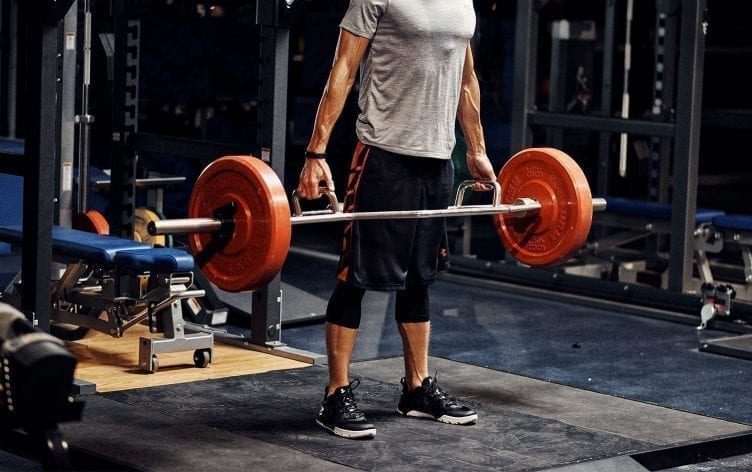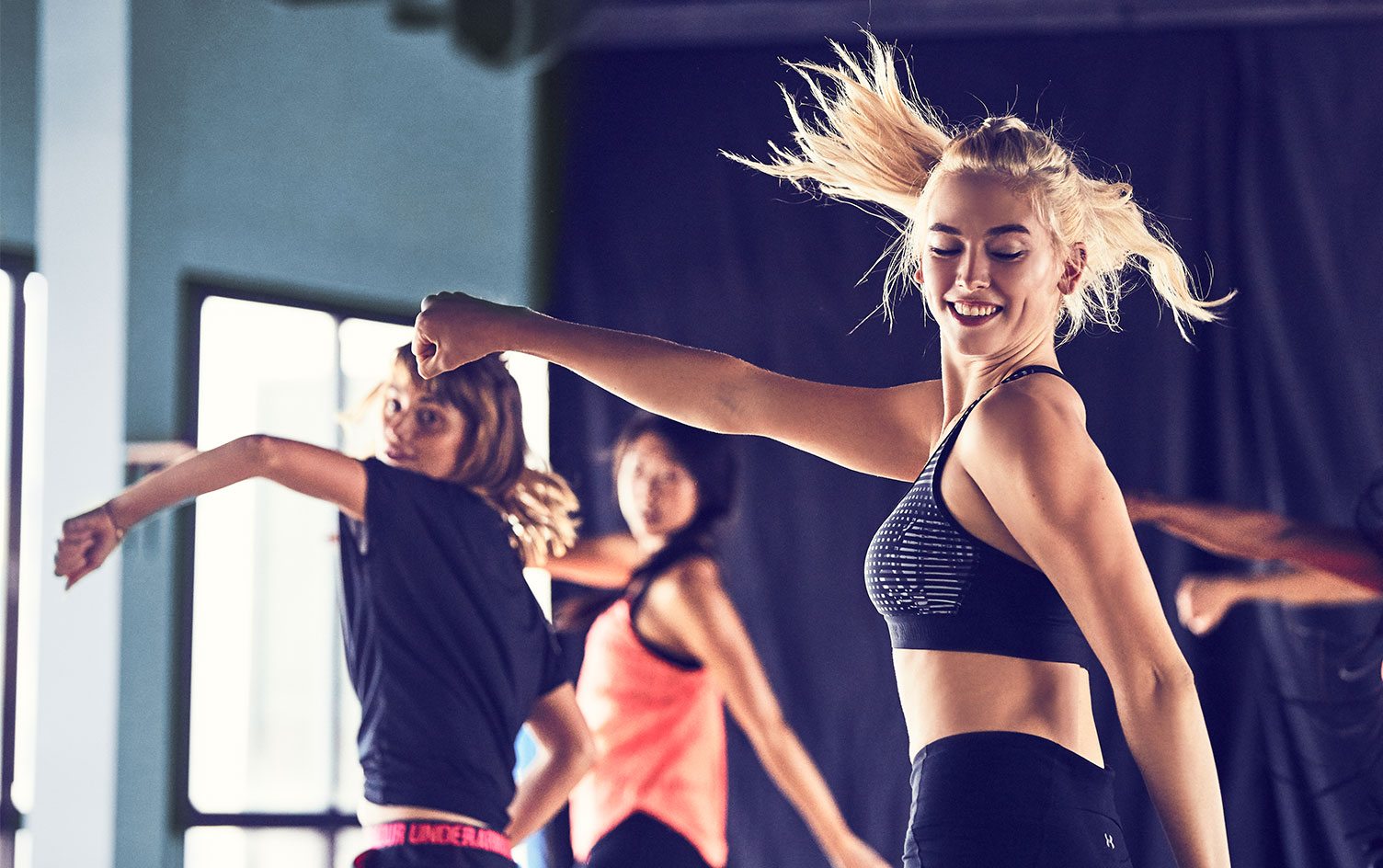
Some debates may never be settled, like: “To-MAY-to” versus “to-MAH-to.” Creamy versus chunky peanut butter. Strawberry jam versus grape jelly.
It’s probably no surprise that the most heated debates usually involve food, but there’s a hotly debated topic that comes up a lot in the fitness world: Is it better to use light weights and high repetitions or heavy weights and low repetitions for fat loss?
Let’s settle this right now. The answer is… both!
That answer may seem like a cop-out, but it’s accurate. A combination of heavy strength training and high-repetition metabolic conditioning is the most effective and scientifically proven way to lose fat and maintain muscle. Here’s why.

MYTH: LIGHT WEIGHTS WITH HIGH REPS WILL TONE MUSCLE AND BURN FAT
Fact: Light weights with high reps alone don’t tone muscle or burn fat.
People often use light weights and high reps exclusively when aiming to lose fat, but this is a huge mistake — especially if you want to have toned muscles, because lifting weights doesn’t stimulate muscles enough for fat loss. Focused nutrition and high-intensity interval training (HIIT) take care of fat loss, while strength training will help you keep the muscle you already have. That said, to maintain the most muscle possible, you have to lift weights that are heavy enough to convince your body that it still needs that muscle tissue.
Do: Use light weights and high reps, but not in the traditional sense of weightlifting. Instead, do full-body exercises in a circuit, performing high reps with limited rest. See HIIT methods below for examples.
READ MORE > SHOULD YOU LIFT WEIGHTS TO FAILURE?
MYTH: HEAVY WEIGHTS BUILD MUSCLE, MUSCLE ELEVATES METABOLISM, SO LIFT HEAVY TO BURN FAT
Fact: Heavy weights build strength, which helps you maintain muscle while losing fat.
Lifting heavy weights with low reps won’t help you lose much weight, but it will help you maintain hard-earned muscle while losing fat. High reps (12 or more reps per set) build muscular endurance but don’t really build strength. Sets in the 3–10 rep range work best for keeping the muscle you already have, then HIIT helps strip away the fat tissue on top of those muscles.
A landmark study published in the American Journal of Clinical Nutrition found that overweight individuals who lifted weights while dieting lost significantly less muscle mass than subjects who only performed aerobic exercise while following the same diet. The kicker: The subjects who lifted weights and the subjects who did cardio lost the same amount of weight overall.
The lesson? Resistance training using moderate to heavy weights gives your body a reason to hold onto muscle tissue. In the end, the weight you lose will be more fat than muscle.
Do: Lift weights 2–3 times per week, using compound exercises like squats, deadlifts, pushups and rows. Do 3–10 reps per set, and stop each set 1–2 reps shy of failure.

MYTH: CARDIO BURNS MORE CALORIES THAN LIFTING WEIGHTS
Fact: Straight cardio burns more calories during the workout than lifting weights, but HIIT burns more calories overall because it raises your metabolism for several hours after your workout.
The most efficient way to lose fat fast is to create as large a metabolic disturbance as possible during your workouts. In plain English, you want to push your body to its limit with quick bursts of intense exercise followed by periods of incomplete rest. That’s the premise behind HIIT, and it’s hands-down more effective than traditional cardio for fat loss.
Some solid examples of HIIT methods include:
- Sprint intervals on a stationary bike
- Kettlebell swings
- Medicine ball circuits
Do: Perform HIIT 2–3 times per week for 15–30 minutes. Push yourself hard! This is where the “light weight, high reps” approach actually works.
THE BIG TAKEAWAYS
In the end, nutrition has the biggest impact on overall weight loss, but using a combination of strength training (heavy weights, low reps) and HIIT (light weights, high reps) can help you lose more fat and keep more muscle. To summarize:
- Maintain a subtle calorie deficit to ensure you lose weight gradually (and use the MyFitnessPal app to track your calories for better results).
- Eat enough protein to maintain muscle (about 1 gram per pound of body weight).
- Lift moderate to heavy weights for sets of 3–8 reps 2–3 times per week to maintain muscle mass.
- Perform high-intensity interval training 2–3 times per week to stimulate fat loss.

